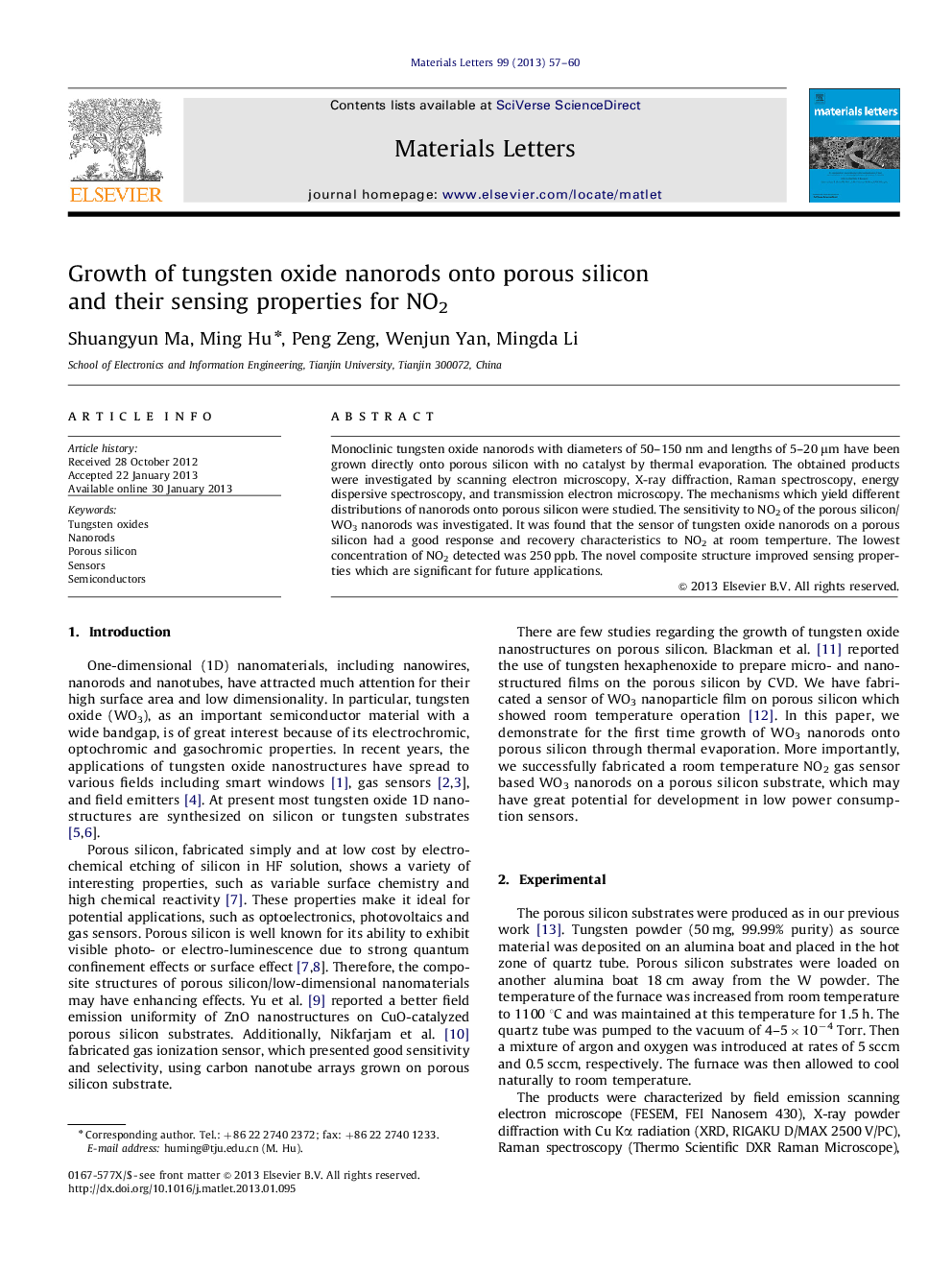| Article ID | Journal | Published Year | Pages | File Type |
|---|---|---|---|---|
| 1645696 | Materials Letters | 2013 | 4 Pages |
Monoclinic tungsten oxide nanorods with diameters of 50–150 nm and lengths of 5–20 μm have been grown directly onto porous silicon with no catalyst by thermal evaporation. The obtained products were investigated by scanning electron microscopy, X-ray diffraction, Raman spectroscopy, energy dispersive spectroscopy, and transmission electron microscopy. The mechanisms which yield different distributions of nanorods onto porous silicon were studied. The sensitivity to NO2 of the porous silicon/WO3 nanorods was investigated. It was found that the sensor of tungsten oxide nanorods on a porous silicon had a good response and recovery characteristics to NO2 at room temperture. The lowest concentration of NO2 detected was 250 ppb. The novel composite structure improved sensing properties which are significant for future applications.
Graphical abstractFigure optionsDownload full-size imageDownload as PowerPoint slideHighlights► One-dimensional tungsten oxide nanorods were synthesized onto porous silicon. ► The different distributions of nanorods between on surface and in pores of porous silicon were studied. ► The sensor based tungsten oxide nanorods onto porous silicon exhibited a high sensitivity and a good recovery to NO2 at room temperature.
